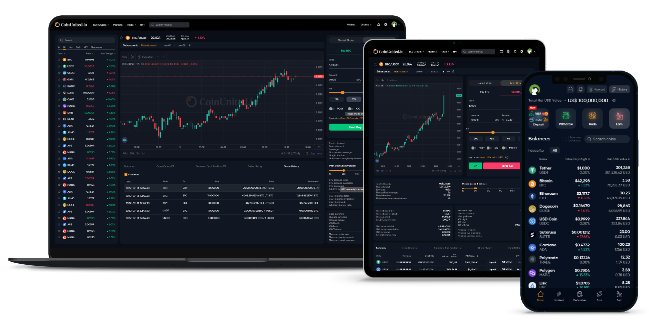Last month, the 274-meter-long tanker Decathlon slammed into the German port city of Wilhelmshaven, providing concrete proof of American geopolitical strength.
A few days prior, an EU ban on Russian seaborne crude had gone into effect, posing the danger of more upheaval in the world’s energy markets. American oil was timely coming as the Decathlon unloaded its cargo.
American exports of both have increased as Moscow has reduced natural gas shipments to Europe and western sanctions have targeted its oil. According to data company Oilx, 500 ships carrying US oil have traveled to Europe since February 2022, assisting US petroleum exports in reaching a record high in 2016.
The achievement symbolized the culmination of the 15-year shale revolution, an energy and technological revolution in which fracking turned the world’s greatest consumer of oil and gas into its largest producer. By keeping gasoline costs low, rapid shale expansion significantly boosted the global economy and gave Washington the freedom to compete with oil-rich adversaries Iran and Venezuela without worrying about domestic political backlash.
Even as the Arab Spring caused unrest for Middle Eastern producers and new violence broke out in northern Iraq and the Arabian peninsula, including attacks on Saudi Arabia’s oil infrastructure, soaring shale oil output contributed to calming turbulent petroleum markets. The American oil and gas export flotilla now traveling across the Atlantic has contributed to putting an end to Vladimir Putin’s energy conflict.
According to David Goldwyn, the chairman of the Washington-based consulting firm Goldwyn Global Strategies and a former senior energy advisor to Barack Obama, the shale boom “vaulted the United States back to the top of the table in terms of geopolitical relevance.”
Furthermore, the cumulative quantity of shale supplies provided over the last 15 years has shielded Americans from the exorbitant natural gas and gasoline costs that have shook other developed countries, providing their sector a competitive edge and their people greater discretionary cash.
Analysts warn that this period of transformation is coming to an end, with unpredicted effects. Wall Street wants earnings returned to investors rather than put into new drilling rigs. Shale producers are still hesitant to spend money, despite oil prices being $80 per barrel, which is significantly higher than the long-term average. To top things off, oil production from new wells is declining.
According to Scott Sheffield, chief executive of Pioneer Natural Resources, the nation’s largest shale producer, “the aggressive growth age of US shale is finished.”
There are circumstances in which this may not matter: if China’s economy continues to falter and Russian oil exports continue to grow strongly in spite of sanctions, then oil markets should be adequately supplied. And if the energy shift picks up speed, the globe might be able to survive without the rapidly expanding American oil supplies. Indeed, a significant supplier’s slower expansion in fossil fuel use will be welcomed by some environmentalists.
Nevertheless, despite some governments’ attempts to decarbonize their economy and reduce emissions, there is little proof that consumers worldwide are losing their appetite for oil. According to the International Energy Agency, global oil consumption will increase by 1.7 million barrels per day in 2023, hitting a new high of about 102 million b/d. A 2.7mn b/d increase in demand is predicted by Goldman Sachs this year, which would raise oil prices back over $100 per barrel.
Analysts and executives warn that the globe may soon see more oil market volatility as the current global energy order quickly disintegrates.
For some, particularly Saudi Arabia, the United Arab Emirates, and the other petroleum-producing nations that make up the Opec production group, this will be a difficulty for oil-importing nations but a time of increased strength for others.
According to Jeff Currie, global head of commodities research at Goldman Sachs, shale became the “readily accessible spare capacity that could compete with Opec, producing what we then dubbed the “new oil order””.
Another way to phrase it is by Wil VanLoh, CEO of Quantum Energy Partners, one of the largest private equity investors in the shale sector. The triumph of the shale revolution, he claims, “truly put the world to sleep.” “The US seized control of oil pricing from Opec because we were the only country providing global supply increase.
“Shale boom”
The state’s oil production soared more than sevenfold to around 1.5 million barrels per day by 2020, surpassing the output of other Opec members.
It created Harold Hamm, who staked everything on his ability to blast oil from the fragile Bakken shales, America’s most well-known oilman and a multi-billionaire.
However, the 2020 pandemic crisis was almost catastrophic, causing a wave of shale bankruptcies. It was the first indication of shale’s weakness, and it prompted Donald Trump, who was president at the time, to implore Saudi Arabia and Russia to boost prices in order to protect the American oil industry.
Hamm’s business, Continental Deposits, has searched elsewhere for shale resources.
In recent months, output reached a record high, further solidifying its position as the world’s most productive oilfield. Drivers, welders, and pipe fitters have been drawn back to West Texas oil cities like Midland and Odessa by bumper pay.
Even still, total US oilfield activity has decreased; output is growing at a far slower rate than it did during the boom years.
Between 2011 and 2014, US crude output increased annually by an average of 15% as the Bakken and other fields were still developing. In the ten years leading up to 2019, production more than quadrupled, peaking at 13 million barrels per day right before the economic crash caused output to reverse as businesses closed wells, placed equipment on hold, and let go of tens of thousands of employees.
Despite 18 months of high oil prices, output today is still far below the pre-Covid highs and is only now expanding slowly by shale standards. Government forecaster Energy Information Administration projects that supply would increase by just 250,000 barrels per day, or 2%, over the next 12 months, not even enough to meet the anticipated increase in the nation’s oil consumption.
Given recent drops in the number of active rigs, several consultants think even this may exaggerate growth. Energy Aspects, a consultant, predicted that unless activity ramps up once again, shale’s fall rates will quicken in 2013, “perhaps even leading to outright year-on-year reductions” in US output.
Amrita Sen, the head of research at the consulting firm, states that “what was formerly thought of as the supply growth engine of the globe may well be reaching its top.”
Wall Street profits
The available acreage has decreased, according to operators, even in the Permian, which during the epidemic became the only significant source of production increase. This is because of years of rapacious drilling. The largest producers there, like Pioneer, Chevron, Devon Energy, ConocoPhillips, and a few others, continue to have a good supply of prime drilling sites, but smaller businesses are running out.
In contrast to traditional oil production, the output from freshly dug shale wells starts to decline after about a year of use. Companies must continue drilling new wells in order to maintain output year after year.
However, according to Morgan Stanley, “well performance and drilling inventory are becoming problems” in the shale sector. According to Rystad Energy, a consultant, last year was the first time the average amount of oil produced from each new well was lower than the year before.
While supply chain delays are a more overt impact on the sector than the Biden administration, some Republicans and drillers blame it for limiting development.
According to Goldman Sachs, there are still “serious” labor shortages, with the current jobs-to-workers ratio hovering around 20,000 individuals. The necessity to pay greater salaries has led to cost increases; Enverus, an energy consultant, reports that drilling wells cost 30% more last year than in 2021 and anticipates another 12% increase in price in 2023.
According to Rystad, the cost to drill a typical shale well increased from $7.3 million in 2019 to $9 million this year, while the cost to drill 100 feet increased from $75,000 to $100,000.
Some operators claim that even if they had the desire and resources to drill new wells, they couldn’t accomplish it rapidly due to the poor condition of some equipment and labor shortages.
But Wall Street could be the largest barrier to development. Operators regularly overspent cash flows during the peak years for shale, consuming tens of billions of dollars in outside money to finance their drilling binges.
Shale operators pulled off a dramatic financial turnaround with the aid of a rebound in the price of oil by cutting back on capital expenditure and investing the windfall from a booming market in dividends and share buybacks.
“We competed with Opec and produced too much oil,” claims Sheffield, the head of Pioneer.
According to Sheffield, the industry has changed from investing all of its cash flow in increasing output to just reinvesting 40 to 50 percent with an objective of growing by 0% to 5%.
Investors are appreciating the new model and leery of placing more risky bets on a sector with a poor track record and an unknown future in a decarbonizing world after a decade of significant losses in the shale industry.
Arjun Murti, a seasoned oil analyst who is currently a consultant with Veriten, an energy consultancy, claims that there is “absolutely no willingness from investors or firms to return back to reinvesting over 100% of your cash flow.”
return to the previous global order
In this case, what is good for Wall Street will also be good for Riyadh.
According to Goldman’s Currie, the slow expansion of shale is part of a larger trend of persistent underinvestment in global oil exploration abroad, which will give Saudi Arabia and its Opec+ allies more control over the oil market and geopolitical heft.
Investors are less eager to put money into lengthy, expensive projects that can take years to pay off, such those deep at sea, as decarbonization approaches, he contends.
Russia, the Middle East, and US shale, according to Currie. With the US failing, you are now losing the second of the three growth engines.
The mainstay of Opec, Saudi Arabia, has frequently acted as a stabilizing influence in the world’s oil markets. To support prices in 2020, it made significant output reductions, saving other producers like shale from extinction.
Analysts predict that if those producers decide against increasing output due to incapacity or reluctance, restriction of oil demand—similar to the price shock endured by European natural gas users last year—will be the only way to lower oil prices.
Last year, after Russian tanks invaded Ukraine, oil prices rocketed to more than $130 a barrel, giving a glimpse of what may be to come. Despite several requests for additional oil production from the White House, shale firms remained steadfast in their capital restriction. According to some experts, it was an illustration of the type of price discovery that will characterize a market devoid of a supplier to challenge Opec.
“[The market] moved up to test where some poor customer can’t afford this anymore,” says Raoul LeBlanc, vice-president for North American unconventionals at S&P Global Commodity Insights. “I think we discovered this at approximately $120 [a barrel].” “Since the demand had to be satisfied if the supply could not.
But abandoning the market to address the issue does not make for good politics, particularly in America, or cozy geopolitics, particularly at this time of tremendous upheaval.
Additionally, it has sent ambassadors to Riyadh to request greater supplies, lifted restrictions on Venezuela’s oil industry, and freed millions of barrels of petroleum from strategic stocks.
It would be beneficial to wean the world economy off fossil fuels while also reducing greenhouse gas emissions; this goal is reflected in the Biden administration’s decarbonization agenda.
However, this strategy depends on breaking a century-old trend of rising oil consumption, despite the predictions of some analysts that climate policies will stop the world’s addiction to fossil fuels.
.. if we turn out to be more dependent on oil than the current projections suggest, we’ll have serious issues, says Bob McNally, a former assistant to President George W. Bush who now heads the Rapidan Energy Group.
According to McNally, it would be a time of “economy-wrecking, geopolitically destabilizing, boom and bust fluctuations.”





.a80ca33.svg)















.svg)






